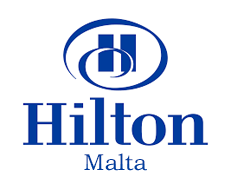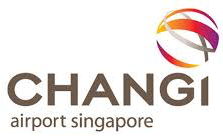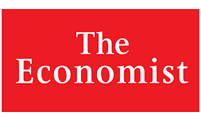Report: The Future of Healthcare
Sector: Healthcare
Publication Date: 2020
Stephan Sturm, CEO of Fresenius Group
Stephan Sturm, CEO of Fresenius Group, a globally active healthcare provider, says that we are fast approaching a new world of care, with a much stronger focus on prevention and more personalised treatment pathways.
Please start by introducing the breadth and scope of Fresenius Group.
We are a global group with close to 300,000 personnel, revenue of nearly €35 billion and active in virtually every country on the planet with operations spanning four main business areas. Fresenius Medical Care accounts for roughly half our revenue and is a leader in dialysis. Fresenius Helios is Europe's foremost private hospital operator, with over 100,000 staff and stands for one quarter of overall earnings. Fresenius Helios owns and operates the Helios brand hospitals in Germany and Quirónsalud hospitals in Spain. Both Helios and Quirónsalud are the largest private hospital operators in their respective national markets, and we have growing ambitions in Latin America as well. Fresenius Kabi meanwhile comprises about a fifth of group revenue and specialises in the manufacturing and supply of just about anything liquid required in hospital settings. Lastly but not least, Fresenius Vamed, accounting for five percent, is a project manager when it comes to building hospitals around the world and is simultaneously our in-house centre of excellence for managing post-acute care.
What do you identify as the main trends in healthcare underway?
Demand for high quality medical care is clearly increasing around the world as life expectancy elongates, but patient needs and expectations are undergoing profound transformation and healthcare has become about much more than just saving lives. We are witnessing an ageing of society around the world and, while a longer life expectancy is to be welcomed, this necessitates changes because the health profile of a more elderly patient population means incidence of comorbidities and chronic lifestyle disease will be more pronounced. Therapeutic pathways will need to become much more individualised, and there will have to be a much stronger focus on prevention and diagnosis if health systems are going to be able to cope. Use of data will surely become a key feature.
What will be implications for healthcare provision?
We're going to see a wholesale breakdown of barriers and much more fluid healthcare continuum. Traditionally general practitioners would refer patients either to hospitals or ambulatory care settings. We predict the barriers between those individual component parts of the healthcare system will be lowered if not removed entirely. Treatments currently performed in a hospital will start to be administered in an ambulatory clinic and those formerly carried out in a clinic may instead be done in the home. In the face of considerable change, healthcare delivery is finding a new equilibrium that is more fit-for-purpose.
Finally, we will be transitioning towards a value-based reimbursement model in contrast to the more familiar payment of a service. The trend is very much towards introducing an element of performance-related contracts, which means there will be a shift of the financial risk that comes along with any patient. Whereas right now we witness disintegration between service providers and health insurance companies, those who can actively control and manage the risk will, in the future, be asked to assume more of the risk.
So we are essentially headed towards a rationalisation of delivery pathways?
Healthcare does indeed need to be rendered more efficient. We approach the new world of care from the assumption that for any given diagnosis, there can only be one most promising therapy and therefore, leveraging the data available to us, we are creating truly evidence-based clinical pathways that statistically demonstrate the highest probability of success.
Markets like the United States have been overhauling care pathways for kidney disease: notably by emphasising transplants and home haemodialysis as opposed to in-clinic treatment. To what extent has Fresenius Medical Care been at the vanguard of pioneering home care, especially since the takeover of NxStage?
We are trying to offer patient–specific, highly individualised treatments to our dialysis patients, and therefore from, our perspective, this is not simply an ‘either/or’ solution. Instead, we are seeking a broad scope of potential dialysis settings. At some point in time, it might be more effective to be seen at a clinic and then, at a later point, in the disease management cycle to switch to a home setting or vice-versa. The watchwords for future care are versatility and flexibility.
The US administration is indeed very much promoting home therapy nowadays, but our own involvement in the sphere of ‘home care’ preceded the present political shift. We have been active in this domain for a very long period of time and have substantially stepped up our efforts with the acquisition of Nxstage, which has made us something akin to the benchmark for this style of care delivery.
How is Fresenius going about future-proofing its business model to cope with the tendency of patients exhibiting a strong preference towards outpatient care?
It is important to understand that home care is by no means applicable for everyone. There is a certain level of fitness we’d be looking for and an absence of any comorbidity. As you expect, there’s also a certain infrastructure requirement at a patient’s home for this to work. Whilst we strongly believe in the future growth potential of this sub-segment, we continue to promote in-centre care simultaneously. The important thing is to have a comprehensive and holistic offering that spans the entirety of the care continuum. Given the overall rise in prevalence of kidney failure, we firmly expect to register strong growth for both our home therapies and our clinics.
The general advantage of the group is its scale and size, which affords a very good overview of healthcare trends around the world. We are the leading German hospital operator, but also in Spain with QuirionSalud. In the Spanish market, there is a relative importance in ambulatory settings as opposed to big-infrastructure central hospitals. We’ve learned a great deal since acquiring that business and are in the process of transferring that best practice to our German setting. We expect to witness a removal and lowering of barriers within stationary care and are responding by increasing the number of ambulatory facilities in the vicinity of our Helios hospitals. They are responsible for treating patients exhibiting less severe diseases, but are simultaneously charged with the initial diagnosis of more severe cases and for referring those patients identified over to Helios.
A core ingredient in the success of the different components that make up the Group (FMC, Kabi, Helios and Vamed) is generally held to be their decentralised structures and individual autonomy. What steps are you taking, however, to ensure that synergies between them can be exploited and that the Group is more than merely the sum of its parts?
Our different businesses are traditionally led very autonomously, and we have always exhibited a preference for higher growth rather than intra-group synergy. Synergies, if they are intended to be sustainable, nearly always consist of a compromise and that, in turn, means a bit of a slowdown when it comes to capturing market opportunities. However, we are always on the look-out for genuinely win-win situations that don’t necessarily mean slowing down in pace. There are instances where it makes a lot of sense for FMC and Fresenius Kabi to collaborate. They are jointly manufacturing large volume liquids for parenteral infusion. Similarly FMC and Helios are experimenting with jointly running ambulatory care centres. At the same time, Kabi and Helios enjoy a solid, but arms-length supplier relationship where we draw on Helios’ practical use of hospital products. The main principle is that these should always be win-wins that come from within rather than a question of the global management board trying to instigate synergy top-down from above.
The proliferation of chronic lifestyle diseases is placing severe strain on healthcare budgets, while kidney conditions are now reaching epidemic proportions. What sort of solutions can a fully integrated player like Fresenius Group bring to the table with a view to making healthcare more financially sustainable over the long run?
Given the breadth of our coverage, our scale and the strength of our balance sheet as well as the in-house availability of structured data in large amounts, we lend ourselves well to being able to shoulder the financial risk relating to specific cohorts of patients. What we are promoting is that, rather than being paid for rendering an individual service, we are paid for assuming risk for an entire patient population. We will take on the risk against a lump sum of reimbursement that covers expenses and profit. Already we are proving in Spain that, with a model where you have appropriate quality assurance tools in place, it is possible to generate a win-win-win for patients, payer and private healthcare provider and its shareholders.
Two and a half years ago, Fresenius Kabi bet big on biosimilars with the acquisition of Merck KGaA’s pipeline. What was the underlying rationale behind the Group getting involved in this area? And how happy are you with the uptake of this category of medicine, which seems to be progressing slower than many previously imagined?
I would say it has been a very disciplined, risk-controlled and calculated bet because we are relying on our traditional strengths. When we talk about R&D, we are talking about the development rather than the ground-breaking research. We are very effectively manufacturing a high-quality product that has already proven effectiveness in the market and can do this because of the additional equities we have gained over the years. We are already one of the leaders around the world with regard to injectable generics and can offer an identical quality, but at a fraction of the cost of the originals. Biosimilars are a touch more complex but this is a challenge we are confident that we can surmount and master. When it comes to the roll-out, I would say we have not been disappointed at all. We see a very good reception for this drug category even if the regulatory infrastructure still has to catch up.
If we want to offer very effective proven drugs to a larger number of patients, there is ultimately no way around going down the route of generics and biosimiliars if we are to ensure healthcare remains affordable going forward. Generics were initially contested but soon went mainstream, and the same will be the case for biosimilars. Anyone who disputes this is on the wrong side of history.

 Related Content
Related Content
Breaking into Africa
Mauritius wants to be the go-to country for entrepreneurs seeking business opportunities on the African continent.
Discover the Real Mauritius
Known as ‘Paradise Island’ thanks to being soaked in sun for most of the year, Mauritius has become a big hit on the ‘to-visit list’ of many tourists.
Prepared for Take Off
While the expansion of the Panama Canal has been completed, construction works on another important infrastructure asset are still ongoing as Tocumen International Airport seeks to strengthen its position in the premier league of global hub airports.
The Colours of Panama
From beautiful beaches and colonial quarters to tropical rainforests and amazing skyscrapers, Panama offers visitors a unique mix of modern marvels and traditional cultures, as well as exciting wildlife and big city environments.
 Related Content
Related Content
Breaking into Africa
Mauritius wants to be the go-to country for entrepreneurs seeking business opportunities on the African continent.
Discover the Real Mauritius
Known as ‘Paradise Island’ thanks to being soaked in sun for most of the year, Mauritius has become a big hit on the ‘to-visit list’ of many tourists.
Prepared for Take Off
While the expansion of the Panama Canal has been completed, construction works on another important infrastructure asset are still ongoing as Tocumen International Airport seeks to strengthen its position in the premier league of global hub airports.
The Colours of Panama
From beautiful beaches and colonial quarters to tropical rainforests and amazing skyscrapers, Panama offers visitors a unique mix of modern marvels and traditional cultures, as well as exciting wildlife and big city environments.
Report Sponsors




























